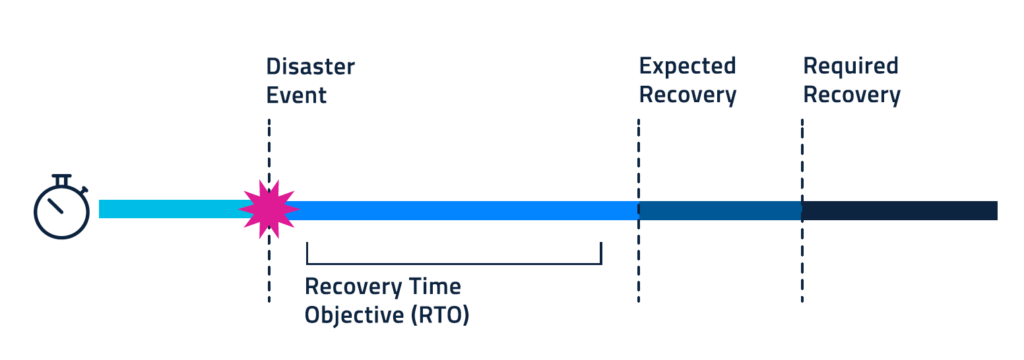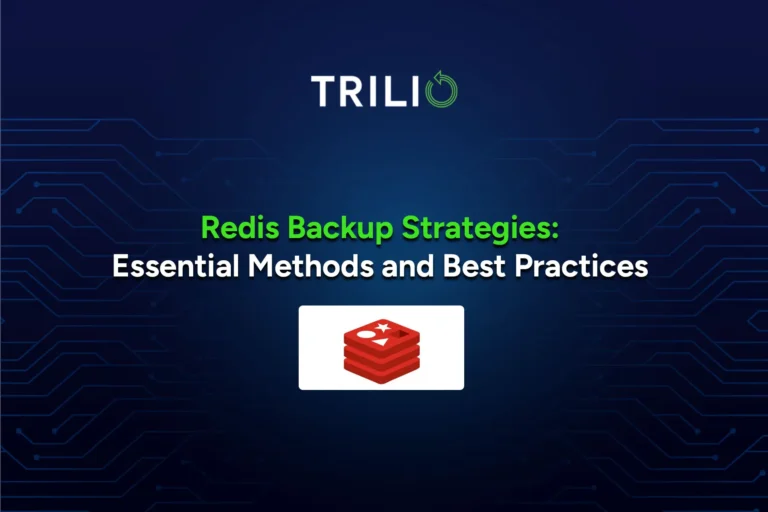By Trilio Content Team | June 15, 2022

In a recent post, we talked about application resiliency—what it means and why it matters. But in order to build more resilient applications, you need to know if your apps are or aren’t resilient in the first place. The question is: How?
When it comes to resiliency, there are two metrics that matter most. And they both come down to one thing: time. So, what are these metrics and how can they give you insight into your application resiliency?
Read on to find out.
How is Application Resilience Measured?
But first, a refresher: What is application resiliency in the first place? The definition of application resiliency focuses on continued functionality, even when failures occur. Here’s how a few of the major players define it.
For example, Microsoft considers resiliency, “…the ability to recover from failures and continue to function.” They also point out that failures are inevitable and that resiliency is about “responding to them in a way that avoids downtime or data loss.”
According to Google Cloud, “A resilient app is one that continues to function despite failures of system components,” adding that, “Resilience also extends to people and culture.” So your apps need to be able to recover from failures of all kinds with minimal downtime and data loss. And when downtime does happen, every second counts.
That’s why metrics focused on time can help you measure your resilience. There are two in particular that matters most: Recovery Time Objective (RTO) and Mean Time to Recovery (MTTR).
RTO

RTO is the maximum amount of time that your app can be down before your business is significantly impacted. Instead of measuring the actual length of outages, it’s a goal based on how much “acceptable” downtime your organization can withstand.
Generally, RTO takes into account the time it takes to be fully operational after an unexpected outage. As Google pointed out, that involves more than just your data recovery time, such as:
- Your people: How long it takes to get the right people to recover your application
- Your backup access: How much time it takes to access your data
- Your transfer time: How long your transfer process takes
- Your system restart time: The time it takes to relaunch applications and load data into production
Want to reduce your RTO & raise your resilience? Download this free eBook: The Complete Guide to Boosting Your Cloud-Native Application Resiliency
Resilient applications can bounce back from outages quickly, and your RTO can help you determine how resilient your apps need to be to hit your goals. “RTO for your business plays directly into the level of application resiliency that is needed,” points out IBM.
But because RTO is a goal, you might not hit it after every outage. That’s where MTTR comes in.
MTTR
While RTO is your agreed-upon business objective for acceptable downtime, your mean time to recover is an average of the actual time it takes you to recover after that downtime.
And that means full recovery “…from the time the system or product fails to the time that it becomes fully operational again,” explains Atlassian. To measure it, you simply add up your downtime and divide it by the number of outages over a specific time period.
So what does this have to do with application resiliency again? MTTR can show you exactly how resilient your applications currently are by looking at actual downtime. Then, RTO can help you determine how resilient they should be.
As you can see, RTO and MTTR are dependent on each other. And as you implement processes or tools to help improve your MTTR, you can adjust your RTO to reflect the speed.
How Resilient Are Your Applications?
If your MTTR is slower than you want it to be, take heart: There are ways to speed it up and get your apps to the level of resilience you need.
Along with building apps to be resilient from the get-go, make sure the services and solutions you use aren’t slowing you down. Google Cloud points out that a top constraint for resilience is depending on services that don’t scale or have trouble operating in high-availability configurations.
Many traditional data protection solutions can’t scale with you, introducing barriers to resilience. For example, those that rely on snapshots as backup doesn’t capture your full application data, like your metadata.
When an outage hits, you have to manually stitch snapshots together, increasing your MTTR. And that’s just one of the ways they slow you down.
Thankfully, you can avoid this by taking advantage of cloud-native enterprise data protection platforms like Trilio, which can improve your RTO by up to 80%. Trilio takes your full application data into account, helps you build custom disaster recovery plans, and lets you send point-in-time copies to any cloud or storage.
So next time an outage hits, recovery is fast, increasing your MTTR and helping you hit your RTO with ease. More resilient apps, met SLAs, happy customers—what’s not to love?
Check out TrilioVault for Kubernetes today to make resiliency a reality for your business.




